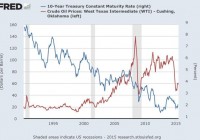What Is In Store For Industrial Metal ETFs After China Rout?
Things were fragile for long in China given the protracted slowdown in the domestic manufacturing sector, credit crunch concerns and a property market slowdown. As a result, the Chinese economy has been undergoing a tumultuous phase for the last few months. To inject fresh optimism into the ailing economy, the People’s Bank of China (PBOC) went into an accommodative policy mode last year, cutting interest rates thrice in just six months, announcing a mini stimulus package mainly targeted at railways and other construction investment, declaring a tax relief for small enterprises and so on. But nothing could repair the economic hole. Despite this ugly truth, investors continuously poured cash into the Chinese markets in the hope for more policy easing, imparting lofty valuations to the stocks. The valuation was, in fact, so high that a steep correction was only in the cards, leading Market Vectors ChinaAMC SME-ChiNext ETF (NYSEARCA: CNXT ) – one of the best performing China A-Shares ETFs – to bleed as much as 43.5% in the last one month (as of July 8, 2015). Before this sell-off, CNXT was up 90% this year. The sell-off was massive on July 7 following a host of policies rolled out by the Chinese government including the stopping of “new companies from selling shares to public” and “plans to establish a fund to stabilize the country’s stock market over the weekend.” The Chinese government sought to hold back the market’s maddening correction but this rang the panic alarm among investors. There was a blood bath in the Chinese equity market. In a single day, CNXT was off 15.7% (on July 7). To add to this, the peaking of the Greek debt deal drama has already contributed to the damage in the form of the global market sell-off. As a result, Chinese stocks have shed over $3.2 trillion in market cap in less than one month, per Bloomberg . Commodity Market Crash Traders viewed this equity sell-off as a driver of the deepening economic crisis, as per Wall Street. Since the Chinese economy accounts for about half of the global consumption of the industrial commodities and is the second biggest purchaser of oil, a further slowdown in Chinese economy means reduced demand for commodities. In any case, Euro zone is fated for turmoil if ‘Grexit’ happens and would see lesser commodity requirement. As a result, commodity prices and the related ETFs were thrashed on July 7. Also, the strength in the greenback owing to its safe haven appeal completely marred the appeal for commodities. Copper fell to a six-year low and nickel touched a five-year low while aluminum and lead got into bear markets, per Bloomberg. Industrial ETFs Crushed Heavily Some of the heavily shorted industrial metal ETFs on July 7 were iPath Dow Jones-UBS Nickel Subindex Total Return (NYSEARCA: JJN ) (down 6.8%), E-TRACS UBS Bloomberg CMCI Industrial Metal ETN (NYSEARCA: UBM ) (down 6.4%), DB Base Metals Double Long ETN (NYSEARCA: BDD ) (down 5%), Elements Rogers Intl Commodity Metal ETN (NYSEARCA: RJZ ) (down 3.3%) and United States Copper ETF (NYSEARCA: CPER ) (down 3%). Road Ahead Investors should note that China equities’ sell-off is basically panic-induced. Immense hope for policy easing made the stock price bubble too airy. And panic over lofty valuation and some statements and measures by the Chinese government are now bursting the same. Hardly were there economic factors behind this boom and doom. Investors can see that nothing concrete happened in the demand profile of raw materials over the last few days. It is just panic which is sweeping across the commodity market. Thus fears over the industrial metal ETFs space may not be as acute as it seems. As soon as this Chinese storm passed by, the space normalized. The horrendous sell-off was then followed by 5.9% gains at the Shanghai Composite on July 9. The industrial metal ETFs gained too. JJN was up 7.64%, RJZ added over 1.7% and CPER advanced over 1.8% on July 9. Having said this, we would like to note that 2015 has not been promising for the broader commodity market especially given the looming Fed rate hike and the consequent strength in the U.S. dollar. Original Post
